Evaluation of Extragalactic Content of the PSC/WSDB
The XSC is 90% complete, and thus spatially uniform, to a flux limit of Ks_m=13.5 in the absence of foreground extinction and confusion. Completeness, in this case, is determined from the recoverability of a source as an extended object in multiple observations. The all-sky distribution of galaxies shows no sign of survey-induced structure for sources brighter than Ks_m=13.5, but spatial variation in completeness becomes apparent at fainter magnitude limits. Figure 1 shows a blink comparison of XSC all-sky maps drawn from different Ks magnitude ranges near the completeness limit. Survey induced structure becomes apparent around K=13.8.
The 2MASS Point Source Catalog (PSC) is complete to Ks_m=14.3, almost a magnitude fainter than the XSC. Given the 2" pixel scale of the 2MASS cameras and the angular size distribution of sources detected as extended in 2MASS, the PSC likely contains millions of unresolved extragalactic objects (compared with 1.4 million definitive detections of extended sources in the XSC). Figure 2 illustrates the color-color diagram for high signal-to-noise sources from the star-dominated PSC vs. the largely extragalactic XSC. The majority of the sources in the PSC lie within the locus of stellar colors associated with main sequence stars and giants as derived by Bessel and Brett (1988) when transformed into the 2MASS color system via Carpenter (2001). The two diagrams demonstrate that the locus of galaxy colors is largely distinct from that of stars and numerous sources in the PSC in the PSC. Figure 3, a diagram for high latitude rd_flg=222 sources in the PSC, demonstrates that, as expected, a population of sources appears at faint magnitudes consistent with the extragalactic locus.
Here we assess the reliability of galaxy selection from the 2MASS point source catalog as a function of color and magnitude. With sufficiently reliable critera, uniform galaxy selection can be extended to flux levels a magnitude fainter than the completeness limit of the extended source catalog, providing access to fainter sources in the nearby universe and a volume of space several times larger.
The Sloan Digital Sky Survey Early Release catalog provides a "ground truth" dataset for star/galaxy discrimination among point sources selected from 2MASS. To investigate the unresolved extragalactic content of the 2MASS point source catalog we selected 2MASS point sources having J-Ks>1.0 and evaluated the population of SDSS-identified galaxies in each 2MASS color/magnitude bin. Doing so determines the reliability that a randomly selected 2MASS source with these colors and magnitudes is, in fact, extragalactic. Although some galaxies have bluer colors than J-Ks=1.0, inspection of the color-color diagrams above reveal that they become heavily confused with stars, particularly at low signal-to-noise ratios where the colors become uncertain.
2MASS sources were cross-identified with the SDSS "primary" dataset and their identity as a star or galaxy was adopted from the SDSS star/galaxy classification. For faint sources, visual inspection of the DSS reveals the SDSS classification to be highly reliable. Figure 4a illustrates the percentage of SDSS/2MASS matches which are galaxies as a function of Ks_m and J-Ks color, while Figure 4b compares the absolute number of sources in each category. The total counts in these figures correspond to the number of galaxy identifications in the 460 square degrees of SDSS early release coverage.
| PSC with/without XSC detections | WSDB vs. PSC |
|---|---|
 |
 |
For some color bins the reliability of color selection of galaxies from the 2MASS point source lists exceeds 80%. Tables 1 and 2 below tablulate the color/magnitude bins which contain more than 100 sources in the SDSS overlap and which have "reliability" for galaxy selection in excess of 60%. Not surprisingly the J-Ks=1.0-1.2 bin is of low reliability because low-SNR stars naturally get scattered into these bins.
| Ks_m | J-Ks=1.0-1.2 | 1.2-1.4 | 1.4-1.6 | 1.6-1.8 | 1.8-2.0 | >2.0 |
|---|---|---|---|---|---|---|
| 13.5-14.0 | - | 99 | 97 | |||
| 14.0-14.5 | - | 94 | 99 | 97 | 91 | |
| 14.5-15.0 | - | 74 | 95 | 98 | 93 | 97 |
| 15.0-15.5 | - | - | 77 | 89 | 87 | 96 |
| 15.5-16.0 | - | - | 60 | 76 | 90 |
| Ks_m | J-Ks=1.0-1.2 | 1.2-1.4 | 1.4-1.6 | 1.6-1.8 | 1.8-2.0 | >2.0 |
|---|---|---|---|---|---|---|
| 13.5-14.0 | - | - | - | - | - | - |
| 14.0-14.5 | - | - | 95 | - | - | - |
| 14.5-15.0 | - | - | 93 | 97 | 96 | 96 |
| 15.0-15.5 | - | - | 76 | 88 | 91 | 94 |
| 15.5-16.0 | - | - | 60 | 73 | 81 | 85 |
The early-release SDSS fields cover 460 square degrees. Presuming that this color-selection can be done effectively over 30,000 square degrees of sky in the absence of excessive reddening (actually an underestimate), Table 1 below summarizes the extragalactic content of the PSC and WSDB. Included are estimates of
- the number of galaxies in a sample with (J-Ks)>1.0.
- the number of galaxies that can be selected with 80% or better reliability based on the statistics in the tables above.
| Catalog/view | Projected galaxies in 30,000 sq. deg. |
Projected sources in 30,000 sq. deg. |
|---|---|---|
| Point Source Excluding XSC detections | ||
| All | 4,225,000 | 8,686,000 |
| >80% reliable | 1,168,000 | 1,258,000 |
| Point Source Including XSC detections | ||
| All | 5,301,000 | 9,769,000 |
| >80% reliable | 1,576,000 | 1,667,000 |
| WSDB Including XSC detections | ||
| All | 6,521,000 | 12,952,000 |
| >80% reliable | 1,739,000 | 1,907,000 |
The additional sensitivity to galaxies provided by the PSC should lead to improved redshift coverage. The plots below compare the match of the four samples above to the SDSS early release redshift catalog. Note that the SDSS redshift catalog is purposefully biased to select for sources of scientific interest and therefore these plots are not fully representative of complete samples. The center of the plots is at the Milky Way and the center-to-edge distance corresponds to z=0.0 to z=0.5
| XSC | Point Sources | WSDB | Blink | Blink (stretch) |
|---|---|---|---|---|
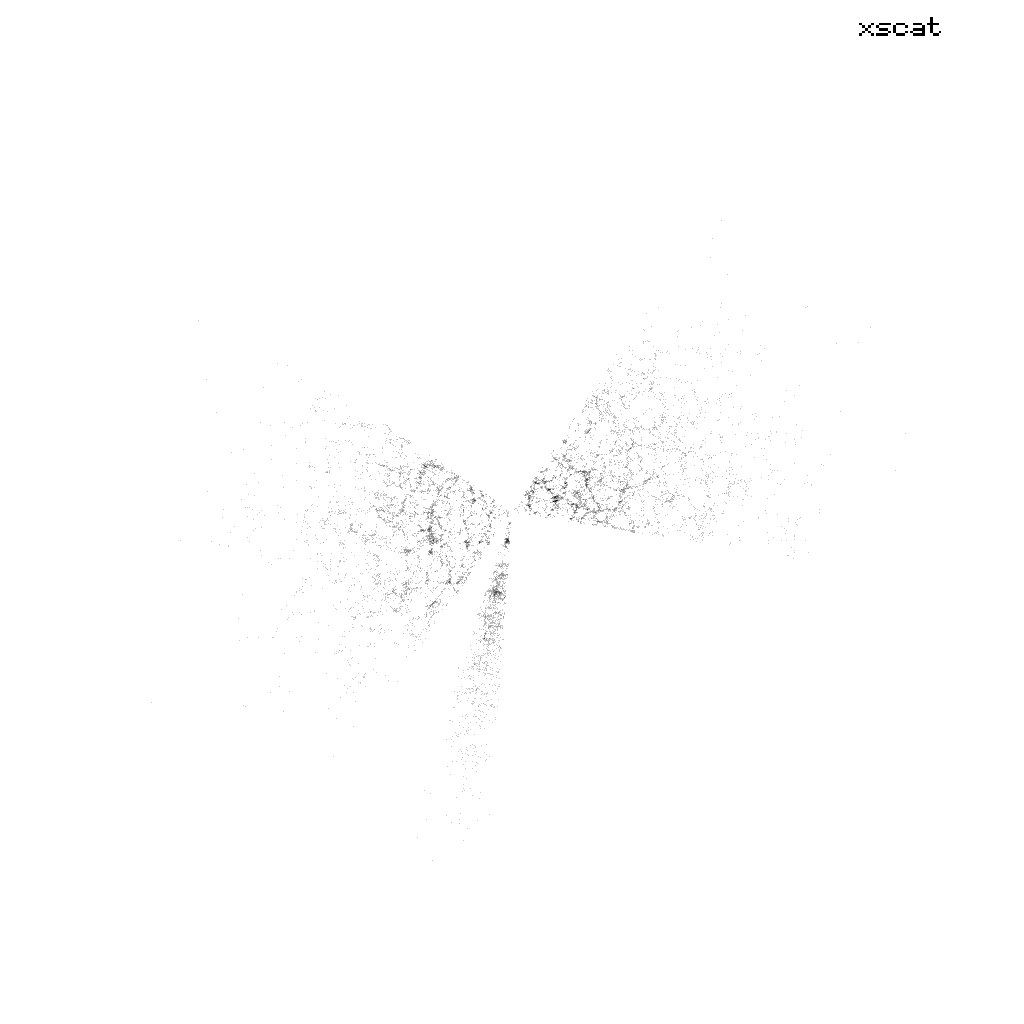 |
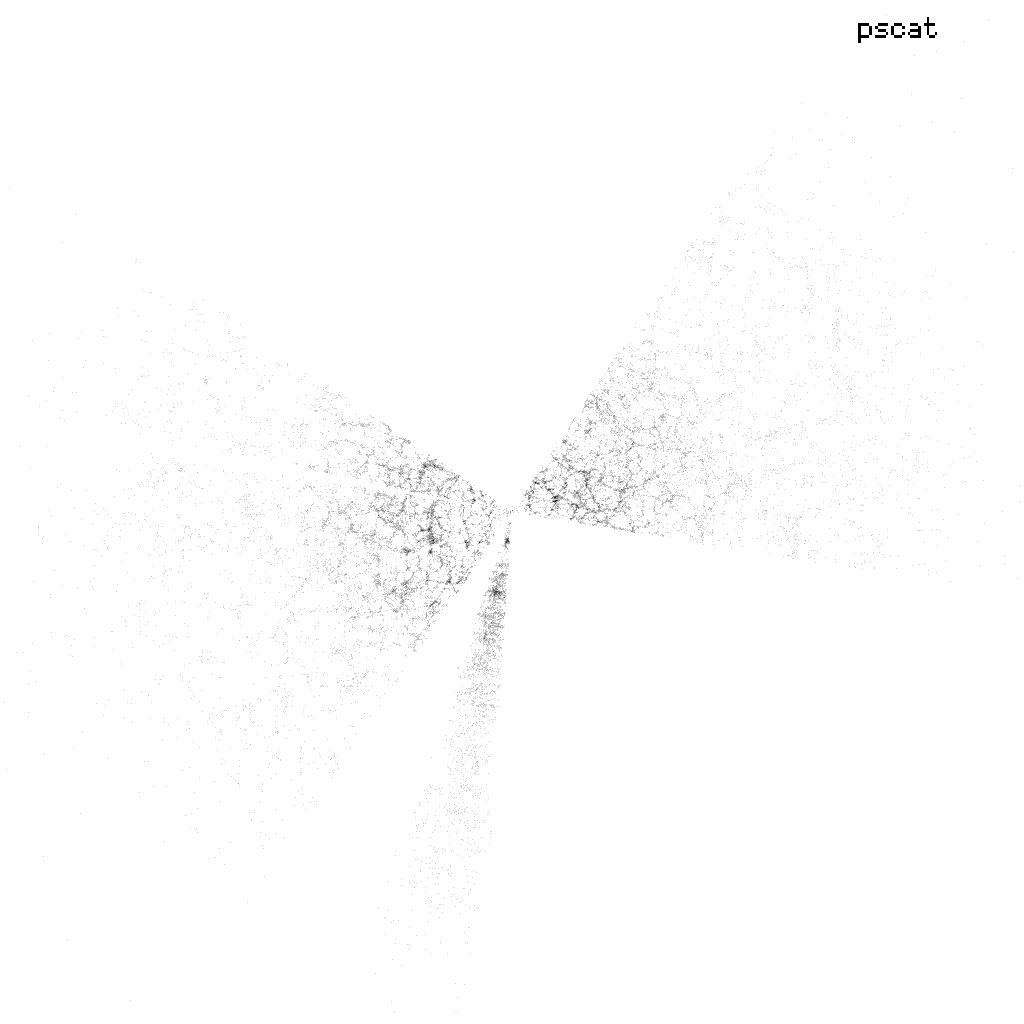 |
 |
 |
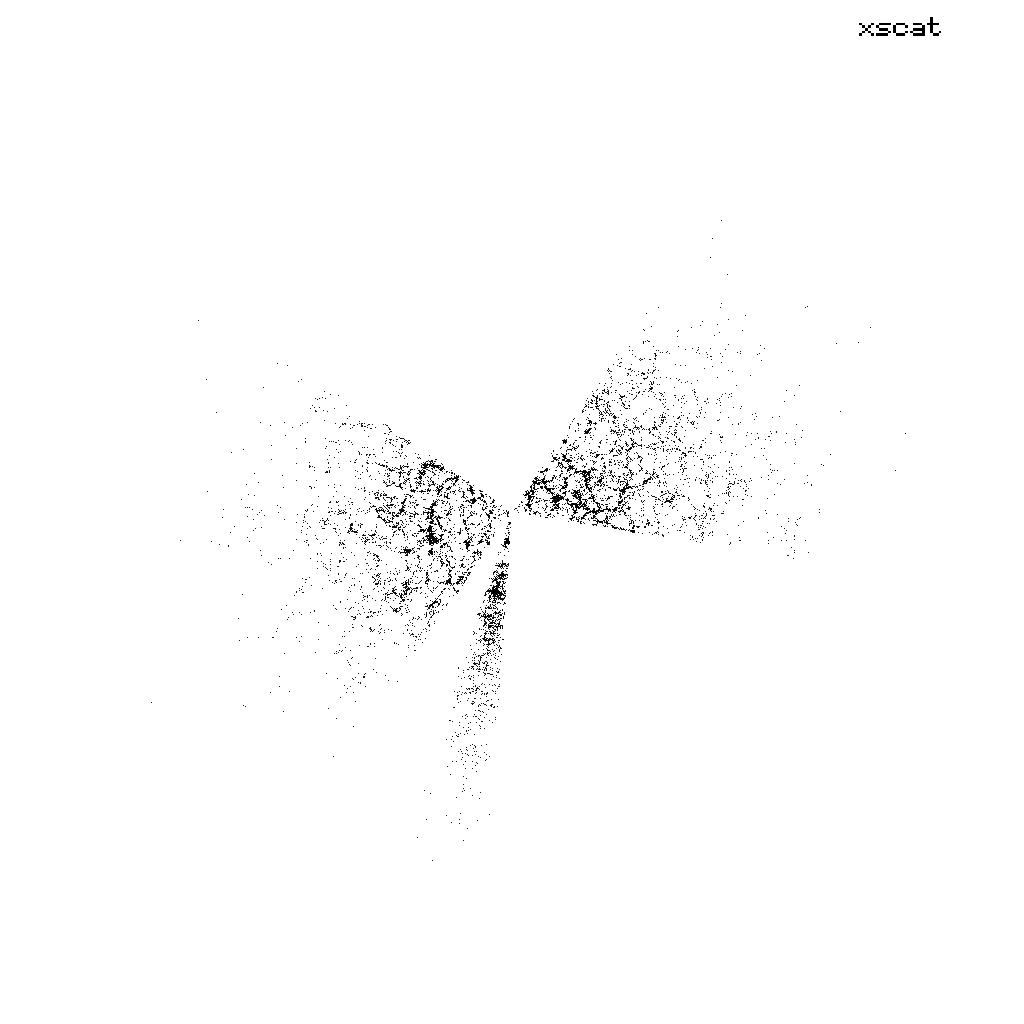 |
The pairing with the SDSS early release redshift catalog also permits an evaluation of the trends in J-Ks vs. redshift. As expected from the k-correction J-Ks correlates well with redshift -- even to the extent that a "distance-weighted" sample could be selected from the point source catalog with appropriate color cuts.
| Local Distribution | All Sources |
|---|---|
 |
 |
The primary point of this exercise was to determine whether galaxy detection could be extended with reliability and uniformity to fainter magnitudes than the XSC. One can never approach the quality of the XSC due to two factors
- Since the sample described here is color-selected it must exclude regions near the Galactic plane where colors are skewed.
- The color-selection further isolates (particularly for reliable selection where J-Ks>1.3) intrinsically red and cosmologically reddened objects. There is a bias in the selection toward greater distance (which can be used to scientific advantage as well, of course).
The following query selects 2.8 million sources which meet the >80% reliability requirements for the combined XSC/PSC tabulated above. The number of sources is larger than the estimate in Table 3 because sources were selected to abs(glat)>5.0 and thus include some objects which are simply reddened. These reddend regions are apparent in the figures below (but equally apparent is that the extragalactic color-selection can be reliable in most places even within 5 degrees of the plane). 1/4 of the selected sources appear in the XSC (524,000).
select cntr,ra,decl,j_m,h_m,k_m,j_cmsig,h_cmsig,k_cmsig,rd_flg, cc_flg,bl_flg,prox,ext_key from v3_pscat where (glat>5. or glat<-5.) and ((rd_flg = '222' or rd_flg = '202') and (j_m-k_m > 1.2 and k_m between 13.5 and 14.5) or (j_m-k_m > 1.4 and k_m between 14.5 and 15.0) or (j_m-k_m > 1.6 and k_m between 15.0 and 15.5) or (j_m-k_m > 1.8 and k_m between 15.5 and 16.0))
| 14.0<Ks<14.5 | 14.5<Ks<15.0 | 15.0<Ks<15.5 |
|---|---|---|
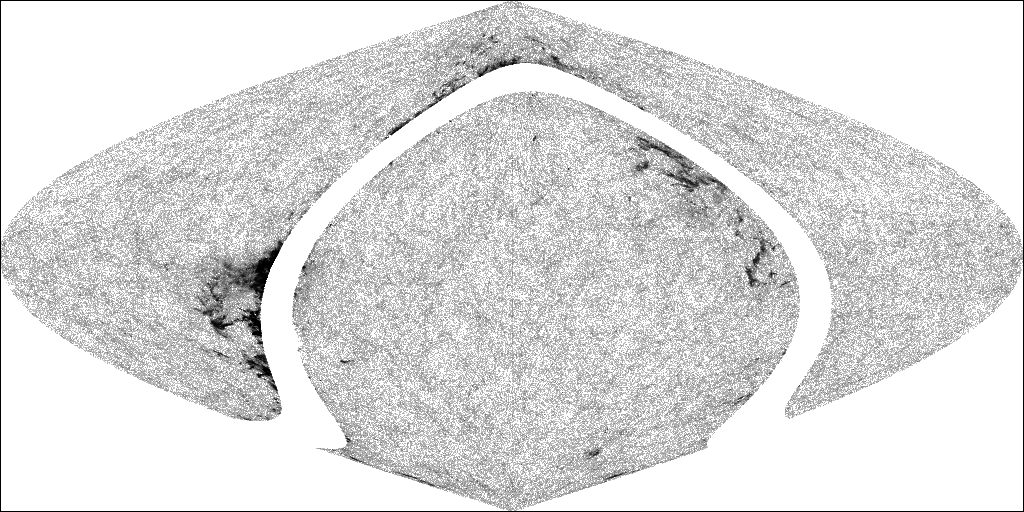 |
 |
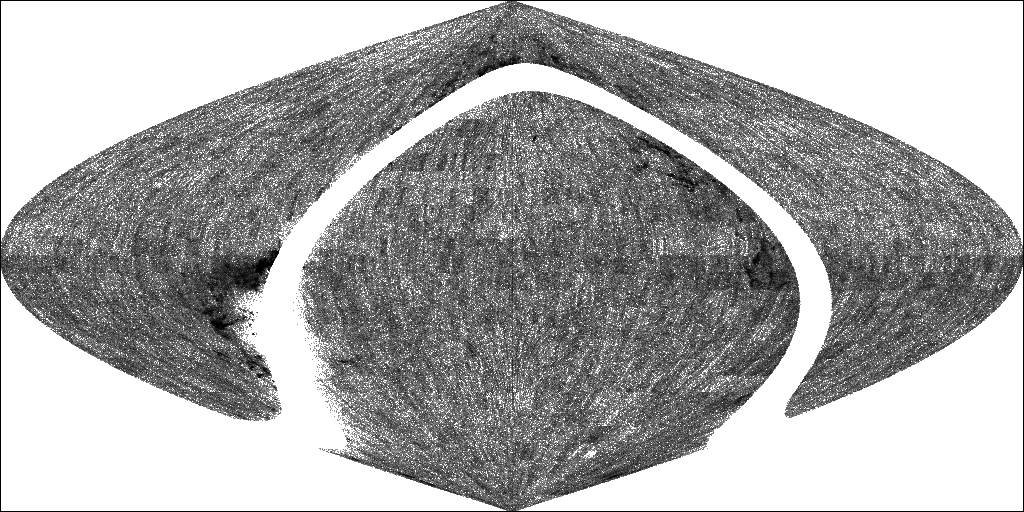 |
| 1.3<J-Ks<1.5 Ks<14.5 | 1.3<J-Ks<1.5 Ks<15.5 | |
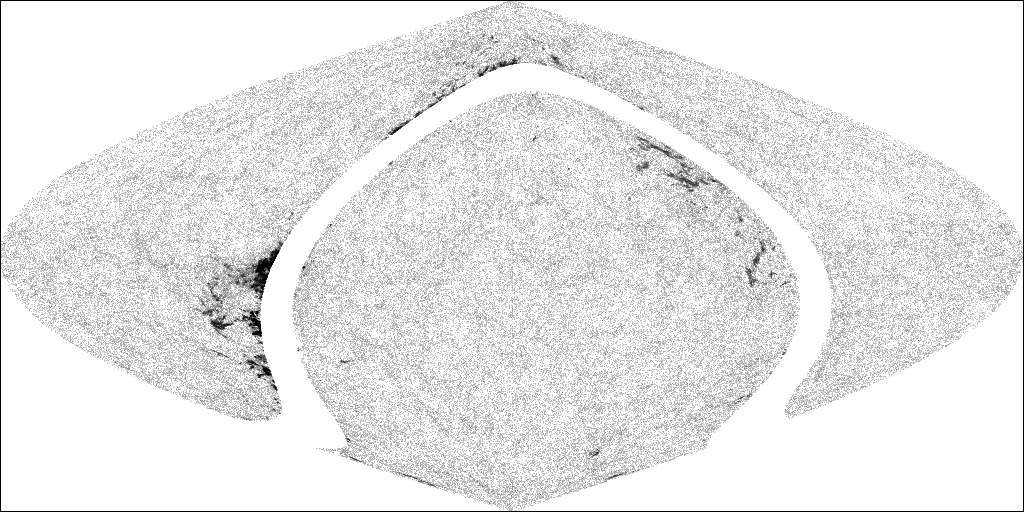 |
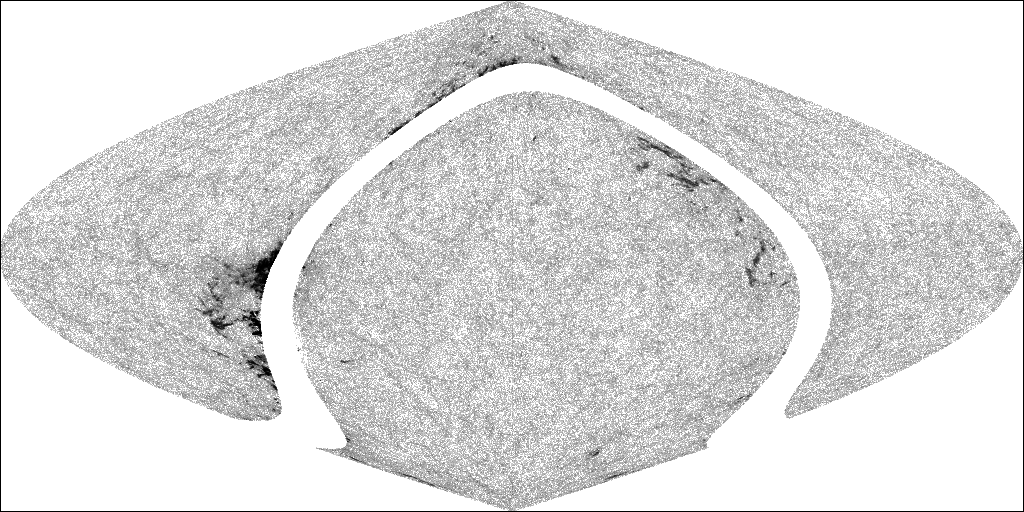 |
|
| J-Ks>1.5 Ks<14.5 | J-Ks>1.5 Ks<15.0 | J-Ks>1.5 Ks<15.5 |
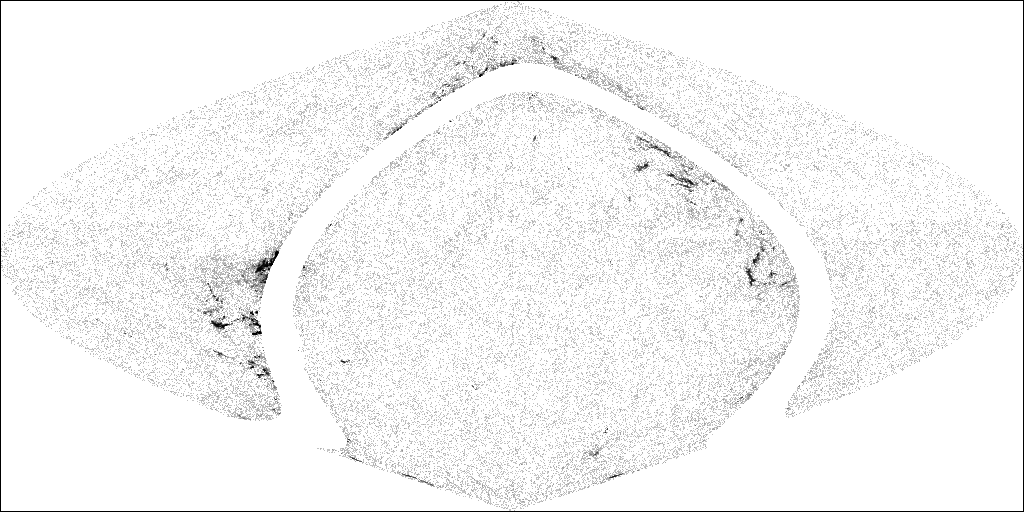 |
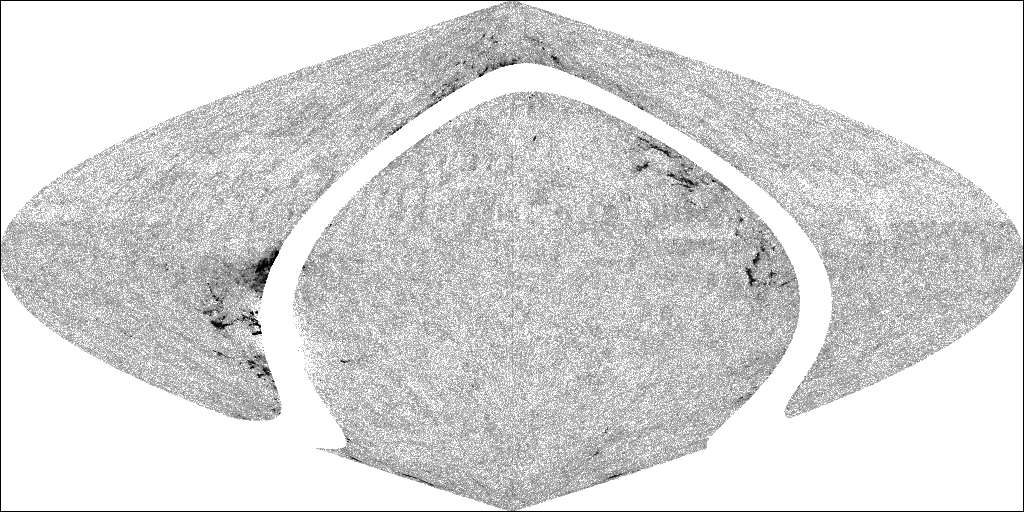 |
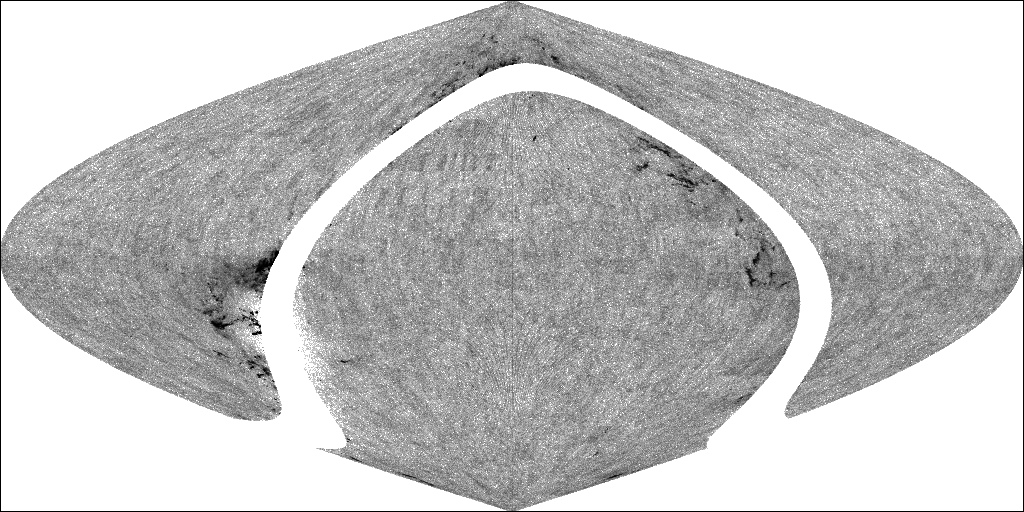 |
Heather Welch
Mike Skrutskie
November 5, 2002